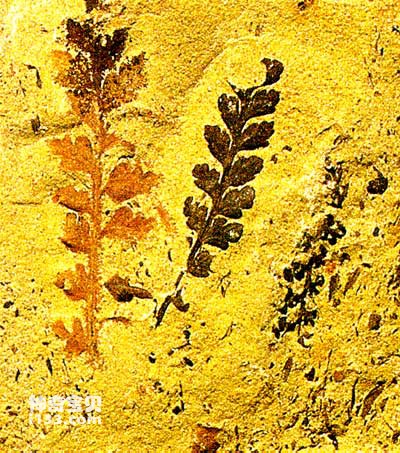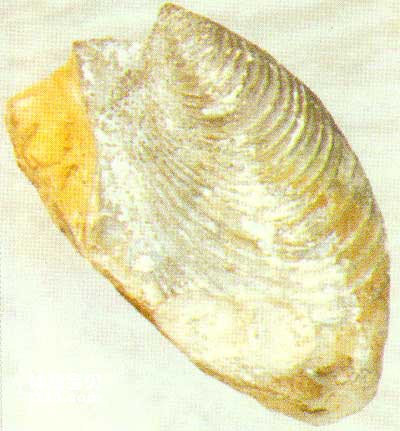Paleontologists call the impressions and replicas of paleontological remains left in rock formations or surrounding rocks called cast fossils. They can be divided into five types based on their relationship with the surrounding rocks: impression fossils, impression fossils, and core fossils. , cast fossils and composite mold fossils.

Fossil leaves
Imprinted fossils are impressions left by biological remains (mainly soft parts) trapped in fine clastic sediments or chemical sediments. Although the remains themselves were destroyed by corrosion and diagenesis, the impressions were preserved, and such impressions can often reflect the main characteristics of the creature. The jellyfish impressions of coelenterates, the impressions of worms and the impressions of plant leaves are all impression fossils.

Shell vegetable - a bivalve
Impression fossils include two types: external molds and internal molds. The external mold is the imprint of the outer surface of the hard part of the ancient organism's remains (such as a shell) on the surrounding rock, which can reflect the morphological and structural characteristics of the original organism's appearance; the internal mold is the imprint left by the inner surface contour structure of the shell, which can reflect the appearance of the original organism. The internal shape and structural characteristics of the biological hardware. For example, the two-valve shells of bivalves are often preserved scattered. After they are buried by sediments, the sediments solidify into rocks through the diagenetic process, and the shells are sometimes dissolved by water, but they remain in the relationship between the surrounding rock and the shell. The outer mold is printed on the contact surface of the outer surface, while the inner mold is printed on the contact surface of the surrounding rock and the inner surface of the shell.

Stone swallow - a brachiopod
Molded core fossils are divided into two types: inner core and outer core. When brachiopods and some bivalves die, their shells are often buried with both halves intact and the internal cavity filled with sediment, leaving a solid body inside after consolidation and dissolution of the shell. That's called the kernel. If the shell is not filled with sediment, when the shell dissolves, a space equal to the size and shape of the shell will be left in the surrounding rock; if this space is filled again, a space equal to the size and shape of the original shell will be formed. An entity with the same shape but uniform composition is called the outer core.
When the shell is buried by sediment and the outer mold and core have been formed, the chitin is sometimes completely dissolved and then filled with another mineral, so that the filler retains the original shape and size of the original shell like a cast model, so that Cast fossils were formed.
Cast fossils in which the inner mold and the outer mold overlap are called composite mold fossils. When the shells are buried in the sediment and form the inner mold and the outer mold, if the shells are subsequently dissolved leaving gaps in the surrounding rock, and then the outer mold and the inner mold overlap due to the compaction of the rock layer, Composite mold fossils are formed.
animal tags:
We created this article in conjunction with AI technology, then made sure it was fact-checked and edited by a Animals Top editor.